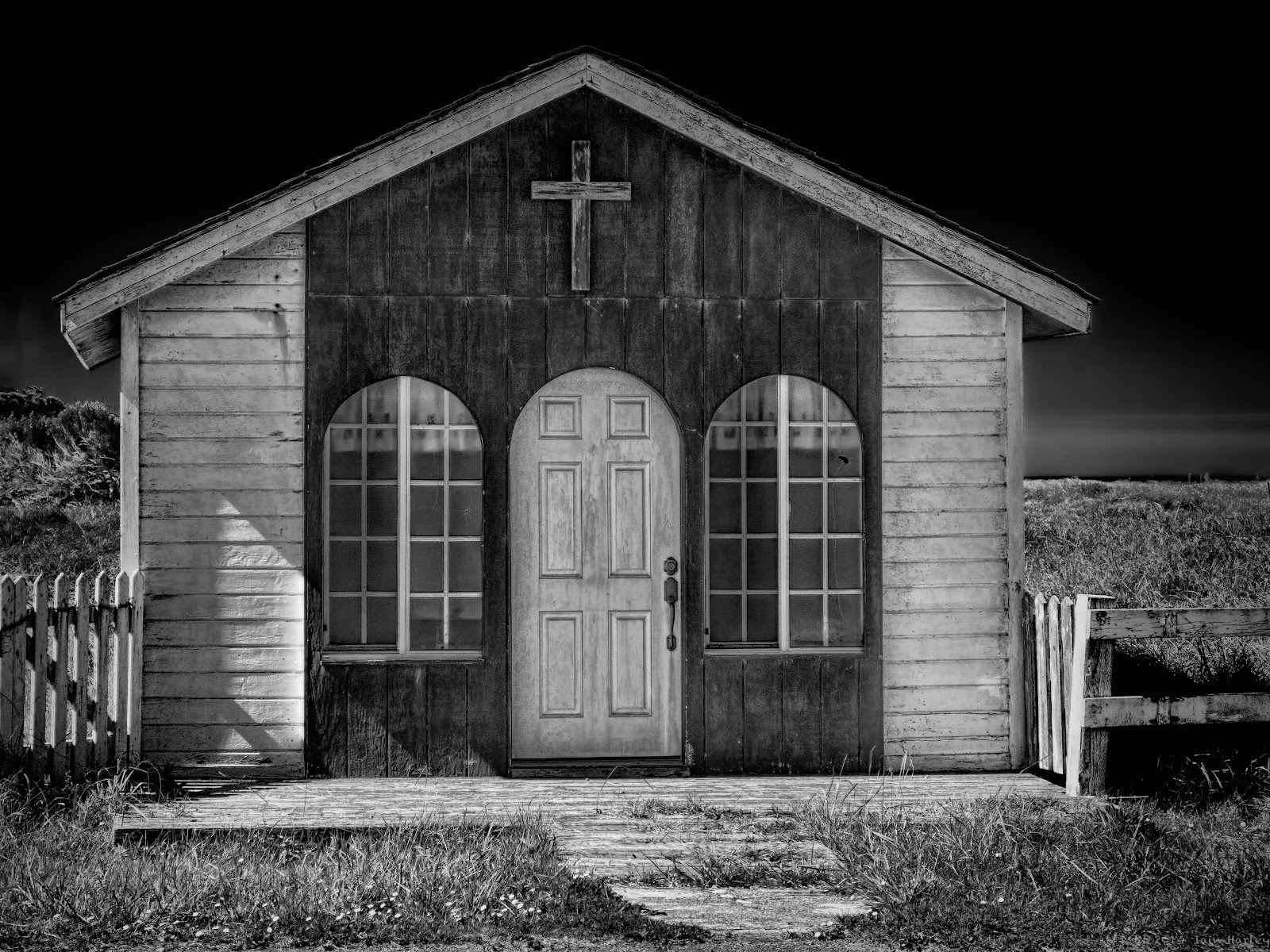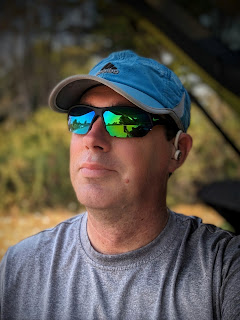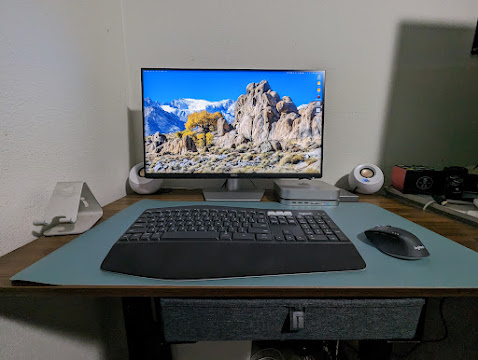 |
| Holy Trinity Church in Infrared |
Of the three months of themes for
+The Patch - PhotogrAphy Themed CHallenge it is obvious to me which one has been my favorite so far. The month of March has 5 different architecture categories, and this past week was Churches, and when it came to choosing a photo I found that I had quite a number of shots to choose from with different processing for each. The above shot of Holy Trinity Church, established in 1863 in Trinidad, CA, is the shot I chose to show. This is an infrared shot that gives it, in my eye, a different feel, a subtle glow to it.
Without getting too much into the science of light, infrared is a near visible area of the spectrum that our eyes can't see. Cameras can see IR, but most cameras have a filter on them that minimizes that wavelength or blocks it altogether, an IR blocking filter. An IR filter (non-blocking) is a filter you attach on your lens, or permanently on your camera's sensor, to effectively block most of the visible light and allow mainly infrared light to hit your sensor. With a lens based filter this usually leads to long exposure times as the sensor needs more time to gather more light to make a well exposed shot since the camera has IR blocking or minimizing filters. The above shot taken on a very bright sunny day with an aperture of f3.9 and an ISO of 160 has a shutter speed of 3.2 seconds. A similar shot I took without the IR filter and nearly identical settings produced a shutter speed of 1/1000 of a second. That should show you just how little visible light is hitting the sensor with the IR filter in place.
 |
| Holy Trinity in IR Side view |
My filter is designed to let the 720nm wavelength of infrared into the camera. This is supposedly the "do it all" wavelength for doing the very fantasy-like faux color infrared photos and the very contrasty black and whites. I think for my camera and the IR minimizing filters it has I should have gone with a less strong IR enabling filter if I wanted better faux color shots, as I've been very unhappy with those attempts. It may also be that I bought a cheap IR enabling filter and spending more for a bigger name in the filter business would get me better results.
So why bother with IR? Early on in my photography journey I stumbled across some faux color IR photos and found them to be a treat. Something I wanted to understand and eventually do. I'm still not there yet as I think to do it to my standard I'll need to convert a camera permanently to IR so I can take much shorter exposure shots. The black and white IR shots usually come out very contrasty after doing a white balance adjustment then doing the basic conversion. There also seems to be a soft glow to the whites on the church that I can't seem to easily replicate in post processing a standard black and white shot. Also, I love what IR does with plants, turning them into whites. Take a shot of a field of grass and it comes out looking like a field of snow, it's really unique.
And here are some other shots that I considered:
 |
| Chapel at Point St. George Heritage Site in Crescent City, CA |
This tiny chapel was sitting next to a very large abandoned or not very well cared for house. I was unable to go inside it, but through the windows I could see that it had been recently used to hold services. This is a "standard" black and white as the light was too harsh to do much with color.
 |
| Large Church, Ferndale, CA |
I was unable to fit the whole church in from the front-side angle so you'll have to settle for the rear-side angle. This is also the church from my
earlier shot. This is a 7 shot HDR.






Comments
Post a Comment